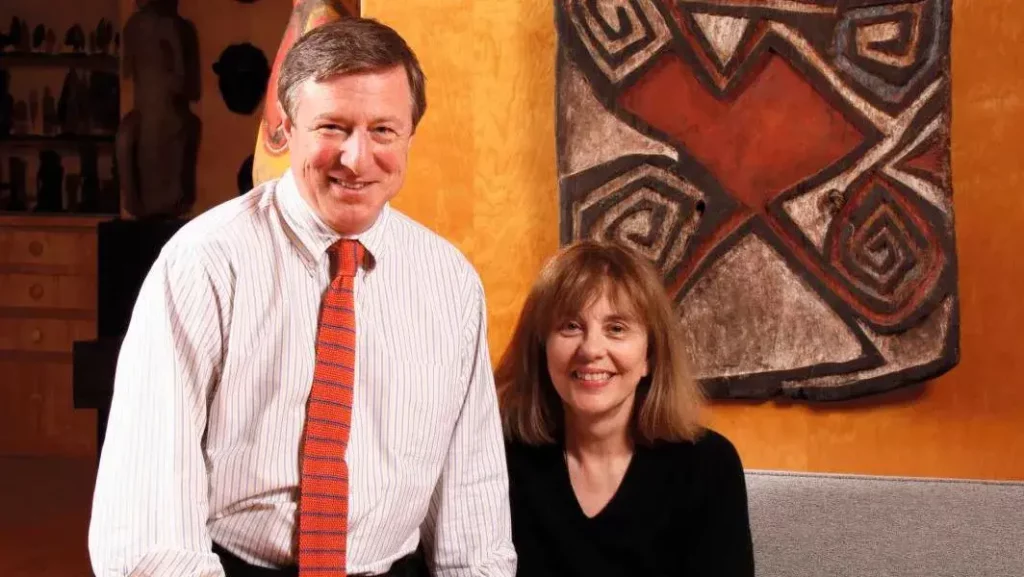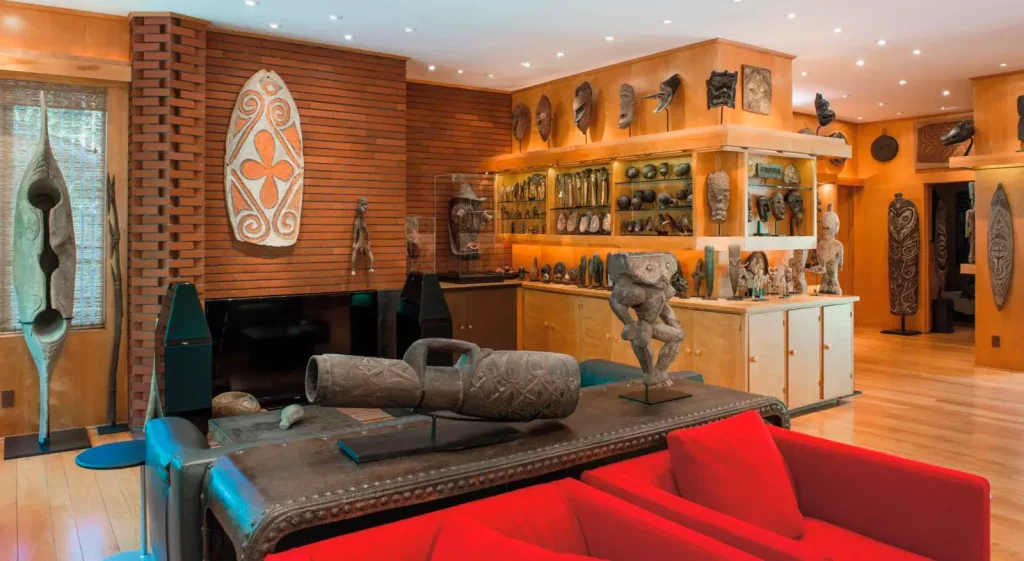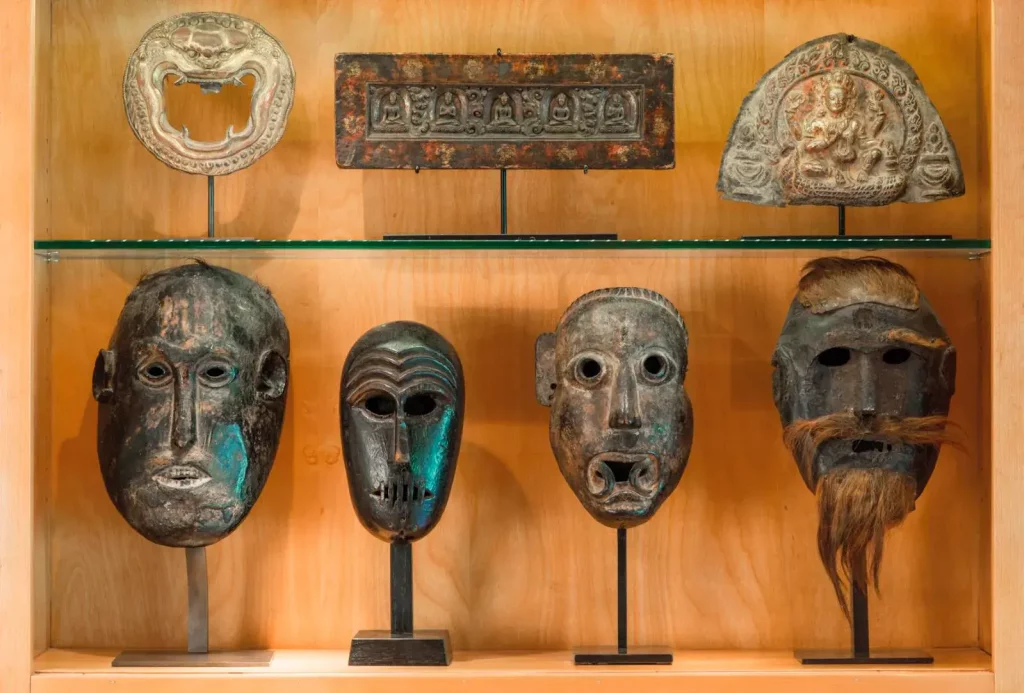Sam Singer: A Wide-Angle View of Oceanian, Indonesian and Himalayan Art
Sam Singer is this year’s honorary president of Parcours des mondes, the must-see Paris exhibition of traditional non-European arts. He and his wife Sharon are major collectors of Oceanian, Indonesian and Himalayan art.

United States Democratic Party campaign consultant and former journalist Sam Singer heads one of the largest public relations firms in the U.S. His clients include Chevron, Disney, Warner, Levi Strauss, Airbnb, Ford and Visa. He and his wife are avid collectors of traditional non-European art, an integral part of their everyday life.
Why did you agree to be the honorary president of Parcours des mondes?
We think Parcours des mondes is the world’s most important traditional non-European arts show. We’re all the happier to be back since we missed it last year due to Covid travel restrictions. For enthusiastic collectors like us, the mandatory stops every year are the San Francisco fair in February, New York in May, BRAFA and Parcours des mondes. If we manage to do them all it’s a grand slam! Right from the start, Parcours des mondes has always managed to bring together the most compelling works and the most important dealers from America, Great Britain, Europe and Australia. The fair is joined by events organized by auction houses and museums. We’ve always enjoyed warm reunions with collectors and professionals in a family atmosphere. Incidentally, I’m a fan of the Gazette Drouot!
As the number of fairs rises, is supply managing to keep up with demand?
Dealers always manage to show their most beautiful pieces. We’ve been coming to Parcours des mondes since its second edition. During each of our trips to Paris in the past 20 years, we’ve spent a lot of money on large pieces as well as on little gems like masks from the Himalayas and New Guinea and ethnographic objects bought from Michael Hamson, Frederic Rond, Jean-Édouard Carlier, Renaud Vanuxem and others.
How did you catch the collecting bug?
Growing up in Berkeley, where my parents were professors, I was steeped in the culture of the 1960s. They brought objects back home from their travels when they gave lectures. The university’s students and professors come from all over the world, and some of my mother’s students, who taught psychology, collected art from Africa or New Guinea. My wife Sharon grew up on the other side of San Francisco Bay. She spent a year in Latin America with her father, who taught at Stanford. We both joined the Peace Corps during the Kennedy years and were mesmerized by the travel stories of friends who returned from far-off lands that sounded magical to us. We got married 25 years ago and it just so happened that both of us were interested in oriental tapestries, which evolved into a shared passion for traditional non-European arts.
How did you experience the last few years?
It was wonderful to be back in England, Belgium and France again. It’s such a big part of our life. The lockdown was an ordeal for us, but we took advantage of the time to read authoritative books, pore over catalogs and talk about the value of art with friends. What’s fascinating about traditional non-European art is that the more time you spend on it the more captivating it is. It’s not just acquiring new pieces that’s exciting, it’s all the research that goes along with it, meeting scholars, dealers and curators.

For you, art is not an investment that you lock up in a safe. Your home in San Francisco is overrun by your collection.
Yes, there are works in every room, even the bathrooms and kitchen. We’re so happy to have them with us.
You’ve made some remarkable choices.
While we love African works, we’ve developed a particular taste for the arts of Oceania, Indonesia and the Himalayas.
One thing they have in common is that they can often look frightening. Do you share any of their characteristics?
True, there can be something scary about these pieces. But they also exude power and elegance, and even a form of universality because they express human feelings.
You exhibit the pieces as such, without mixing them with Western art.
That’s right, we have very little modern and contemporary art.
And you have display cases similar to those in museums, with dozens of similar objects from the same culture.
We like to bring together 40 or 50 similar objects from New Guinea, a bit like a cabinet of curiosities. When you look at them carefully, each one is different from the next and expresses the artist’s unique perspective.

Has your passion led you to explore the countries your pieces come from?
We’ve never been to New Guinea, but we’ve been to Tibet, New Zealand, and the museums in Canberra and Melbourne to attend a seminar just before the Covid crisis. We’ve met wonderful people every time.
The market has changed a lot since you started your collection. Is it out of reach?
While prices have soared in the past 25 years, especially for major pieces, the middle range of the market is still affordable. It may become hard to acquire increasingly expensive works, but every year we manage to find high-quality pieces, sometimes at really good prices.
Provenance research has become a key factor, if only to avoid fakes.
It’s great to have a provenance, but the most important thing is to trust your eye and experience. If a work is beautiful, it speaks for itself. Sometimes we use provenance researchers, but this is still rarely the case.
What’s your reaction to the rise in demands from countries of origin?
I must admit that I’m very skeptical about returning works to their country of origin. Sometimes it might be the right move, but it can also turn out to be a regrettable one. It’s something that has to be taken on a case-by-case basis, and I hope the market won’t be pressured into forced restitutions. Don’t forget that these arts are known around the world thanks not only to people like Breton and Picasso, but also to the market. I tend to think that art is made to be shared. Take jazz, for instance. We’re not the owners, we’re the custodians and our job is to pass it on to future generations. Ownership isn’t the key factor. Art can be loaned or given to museums. The most important thing is to share it.
What might become of your collection?
We haven’t got a plan yet. In due time we’ll see what our four sons would like to do.
WORTH KNOWING
Parcours des mondes, 21st edition, Quartier des Beaux-Arts, Saint-Germain-des-Prés, Paris VI.
From September 6 to 11, 2022
www.parcours-des-mondes.com/en











